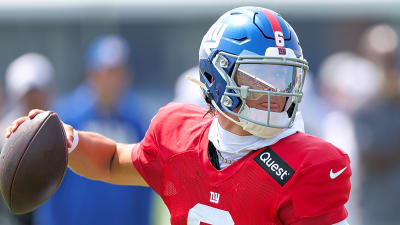
The Emilia-Romagna Grand Prix qualifying session at Imola was anything but routine for Yuki Tsunoda. In the opening minutes of Q1, the Red Bull Racing driver lost control at the Villeneuve chicane, launching into a high-speed crash that sent his car flipping into the barriers.
Tsunoda walked away without injury, but the impact, both literal and metaphorical, was significant. Speaking afterward, he did not sugarcoat it. “A stupid mistake”, he called it. The moment was brief, but its implications were big. For Tsunoda, it was a reminder of how thin the line is between aggressive driving and unnecessary risk.
High Stakes and Higher Speed
Yuki Tsunoda’s crash was sudden and severe, unfolding during his very first flying lap in Q1. Approaching the chicane with maximum commitment, he appeared to misjudge the balance of his RB21, which had undergone setup changes before the session. The rear of the car snapped, sending him into the barrier at high speed. It was a dramatic moment that triggered a red flag and instantly ended his qualifying hopes. Mechanics swarmed the damaged car afterward, aware that an overnight rebuild was now inevitable if he was to race at all.
Yuki Tsunoda did not shy away from the mistake. In post-session interviews, he called it “very unnecessary” and admitted he had overreached in trying to be a “hero” on his first lap. His honesty was refreshing in a sport where ego often tempers self-criticism. Tsunoda’s remarks also hinted at the pressure he places on himself. There was pressure to perform, justify his place in Red Bull’s top team, and rise above past inconsistency. This time, that urgency got the better of him.
There was also the practical consequence: starting from the pit lane. With the car too damaged to qualify, Yuki Tsunoda needed special dispensation to join the race. Red Bull Racing’s mechanics worked through the night, replacing key components to meet FIA regulations. The car passed inspection, and Tsunoda was allowed to start Sunday’s race, albeit at the back of the field. What could have been a weekend of progress quickly turned into damage control.
For many drivers, such a crash would lead to deflection. But not Yuki Tsunoda. He took the hit, literally and figuratively, and faced it head-on. In doing so, he showed the kind of accountability that builds respect even amid setbacks. His focus turned quickly to making the most of the race, salvaging whatever he could from a rough start. The crash may have taken him out of Q1, but it did not knock the fight out of him.
Lessons From the Back Row
Despite starting from the pit lane, Yuki Tsunoda clawed his way back into contention during Sunday’s Grand Prix. The car, freshly rebuilt, held together well, and Tsunoda’s pace showed glimpses of the aggressive but controlled driving style he is working to master. He managed to finish inside the points, a small but meaningful reward for the effort his team poured into making the race possible. For Tsunoda, the finish was not a victory, but a recovery. One that spoke volumes about grit and growth.
In the paddock afterward, Yuki Tsunoda reflected further on the crash and the weekend as a whole. He acknowledged that trying to prove something too quickly can often backfire. He emphasized that the key takeaway was not about pace or placement but about restraint, knowing when to push and when to hold back. That awareness, he said, will shape how he approaches future qualifying sessions. It is a subtle but essential evolution for a driver still climbing Formula 1’s steep learning curve.
Yuki Tsunoda’s journey at Imola also highlighted the team dynamic at Red Bull Racing. His engineers, mechanics, and strategists rallied to repair the RB21 in time for the race. The pit crew’s effort did not just allow Tsunoda to compete, it sent a message about belief. That kind of support is critical in a sport where confidence can swing wildly from one session to the next. Tsunoda, for his part, made it clear he did not take that commitment lightly.
Looking ahead, Yuki Tsunoda said he plans to avoid the “hero Lap” approach in Q1. That does not mean holding back; it means being smarter with his aggression. He has shown speed before, but now he is learning to pair it with patience. Crashes happen in Formula 1. What sets the driver apart is how they respond. At Imola, Yuki Tsunoda turned a disaster into a lesson, and perhaps into the kind of growth moment that shapes a stronger competitor.
Conclusion
Yuki Tsunoda’s crash in Imola could have easily defined his weekend, but instead, his response did. By calling it a “stupid mistake” and owning every part of it, he showed maturity that many still question in young drivers. More importantly, he bounced back. From pit lane to points, Tsunoda delivered the kind of recovery that speaks louder than any press release. With every lap and every lesson, he is forging a path that blends raw speed with deeper control. If he keeps that trajectory, Yuki Tsunoda will matter in Formula 1.
More must-reads:
- Paul Skenes' recent struggles open door for Phillies aces in NL Cy Young race
- Three teams that should take a flier on Odell Beckham Jr. for the 2025 season
- The '2023 NFL AP second-team All-Pro' quiz
Breaking News
Trending News
Customize Your Newsletter
 +
+
Get the latest news and rumors, customized to your favorite sports and teams. Emailed daily. Always free!








